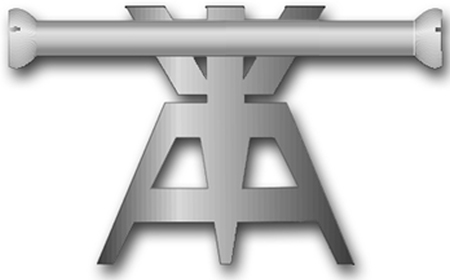|
Master Chief Petty Officer
A master chief petty officer is a senior non-commissioned officer in many navies and coast guards, usually above some grade of petty officer. United States Master chief petty officer (MCPO) is the ninth (just below the rank of MCPON) enlisted rank (with pay grade E-9) in the United States Navy and United States Coast Guard, just above Senior Chief Petty Officer (SCPO). Master chief petty officers are addressed as "Master Chief (last name)" in colloquial contexts. They constitute the top 1.25% of the enlisted members of the maritime forces. Prior to 1958, chief petty officer was the highest enlisted rate in both the U.S. Navy and U.S. Coast Guard. This changed on 20 May 1958 with the passage of Public Law 85-422, the Military Pay Act of 1958, which established two new enlisted pay grades of E-8 and E-9 in all five branches of the U.S. Armed Forces. In the Navy and Coast Guard, the new E-8 pay grade was titled Senior Chief Petty Officer and the new E-9 pay grade as Master ... [...More Info...] [...Related Items...] OR: [Wikipedia] [Google] [Baidu] |
Non-commissioned Officer
A non-commissioned officer (NCO) is an enlisted rank, enlisted leader, petty officer, or in some cases warrant officer, who does not hold a Commission (document), commission. Non-commissioned officers usually earn their position of authority by promotion through the enlisted ranks. In contrast, Officer (armed forces), commissioned officers usually enter directly from a military academy, officer training corps (OTC) or Reserve Officers' Training Corps (ROTC), or officer candidate school (OCS) or officer training school (OTS), after receiving a post-secondary degree. The NCO corps usually includes many grades of enlisted, corporal and sergeant; in some countries, warrant officers also carry out the duties of NCOs. The naval equivalent includes some or all grades of petty officer. There are different classes of non-commissioned officers, including junior (lower ranked) non-commissioned officers (JNCO) and senior/staff (higher ranked) non-commissioned officers (SNCO). Functio ... [...More Info...] [...Related Items...] OR: [Wikipedia] [Google] [Baidu] |
United States Navy
The United States Navy (USN) is the naval warfare, maritime military branch, service branch of the United States Department of Defense. It is the world's most powerful navy with the largest Displacement (ship), displacement, at 4.5 million tons in 2021. It has the world's largest aircraft carrier fleet, with List of aircraft carriers in service, eleven in service, one undergoing trials, two new carriers under construction, and six other carriers planned as of 2024. With 336,978 personnel on active duty and 101,583 in the Ready Reserve, the U.S. Navy is the third largest of the United States military service branches in terms of personnel. It has 299 deployable combat vessels and about 4,012 operational aircraft as of 18 July 2023. The U.S. Navy is one of six United States Armed Forces, armed forces of the United States and one of eight uniformed services of the United States. The United States Navy traces its origins to the Continental Navy, which was established during ... [...More Info...] [...Related Items...] OR: [Wikipedia] [Google] [Baidu] |
Eagle
Eagle is the common name for the golden eagle, bald eagle, and other birds of prey in the family of the Accipitridae. Eagles belong to several groups of Genus, genera, some of which are closely related. True eagles comprise the genus ''Aquila (bird), Aquila''. Most of the 68 species of eagles are from Eurasia and Africa. Outside this area, just 14 species can be found—two in North America, nine in Central and South America, and three in Australia. Eagles are not a natural group but denote essentially any kind of bird of prey large enough to hunt sizeable (about 50 cm long or more overall) vertebrates. Etymology The word "eagle" is borrowed into English from and , both derived ultimately from ("eagle"). It is cognate with terms such as , and . It is broadly synonymous with the less common English term "erne" or "earn", deriving from , from , in which it acts as the usual word for the bird. The Old English term is turn derived from and is cognate with other synonymous ... [...More Info...] [...Related Items...] OR: [Wikipedia] [Google] [Baidu] |
Chevron (insignia)
A chevron (also spelled cheveron, especially in older documents) is a V-shaped mark or symbol, often inverted. The word is usually used in reference to a kind of fret in architecture, or to a badge or insignia used in military or police uniforms to indicate rank or length of service, or in heraldry and the designs of flags (see flag terminology). Ancient history Appearing on pottery and petrographs throughout the ancient world, the chevron can be considered to be one of the oldest symbols in human history, with V-shaped markings occurring as early as the Neolithic era (6th to 5th millennia BC) as part of the Vinča symbols inventory. The Vinča culture responsible for the symbols appear to have used the chevron as part of a larger proto-writing system rather than any sort of heraldic or decorative use, and are not known to have passed the symbol on to any subsequent cultures.Mäder, Michael: ''Ist die Donauschrift Schrift?'' Budapest: Archaeolingua. , (2019), Many compa ... [...More Info...] [...Related Items...] OR: [Wikipedia] [Google] [Baidu] |
Sonar Technician
Sonar technician (: ST) is a United States Navy occupational rating. STs are responsible for underwater surveillance. They assist in safe navigation and aid in search, rescue and attack operations. They operate and repair sonar equipment. STs track underwater threats and send tracks to fire control (antisubmarine warfare controlling station) operator (ASWCS) for further evaluation and or destruction. Sonar technicians are separated into two categories, STG (sonar technician surface) who are on surface ships and STS (sonar technician submarine) who operate on submarine A submarine (often shortened to sub) is a watercraft capable of independent operation underwater. (It differs from a submersible, which has more limited underwater capability.) The term "submarine" is also sometimes used historically or infor ...s. Sonar technicians are colloquially referred to as "ping jockeys" on board surface vessels, after the sound of active sonar. They are also referred to as "Shower ... [...More Info...] [...Related Items...] OR: [Wikipedia] [Google] [Baidu] |
Fire Control Technician
Fire control technician (abbreviated as FT) is a United States Navy The United States Navy (USN) is the naval warfare, maritime military branch, service branch of the United States Department of Defense. It is the world's most powerful navy with the largest Displacement (ship), displacement, at 4.5 millio ... occupational Naval rating, rating. Fire control technicians perform organizational and intermediate level maintenance on United States Navy submarines combat control systems and equipment, and associated test equipment including tactical computer systems and peripherals. The Fire Control Technician (FT) is responsible for all operational and administrative aspects of the submarines computer and control mechanisms used in weapons systems and related programs. See also *List of United States Navy ratings References http://usmilitary.about.com/od/enlistedjob1/a/ft.htm United States Navy ratings {{USN-stub ... [...More Info...] [...Related Items...] OR: [Wikipedia] [Google] [Baidu] |
Military Occupational Specialty
A United States military occupation code, or a military occupational specialty code (MOS code), is a nine-character code used in the United States Army and United States Marine Corps to identify a specific job. In the United States Air Force, a system of Air Force Specialty Codes (AFSC) is used. In the United States Navy, a system of naval ratings and designators are used along with the Navy Enlisted Classification (NEC) system. A system of ratings is also used in the United States Coast Guard. Since an individual can obtain multiple job specialties, a duty military occupational specialty (DMOS) is used to identify what their primary job function is at any given time. An individual must complete and pass all required training for their military occupational specialty qualification (MOSQ). Army World War Two (1942–1946) Originally, the four-digit MOS code mostly listed the recruit's civilian profession. This was to aid in classifying what military job they could be assigned. ... [...More Info...] [...Related Items...] OR: [Wikipedia] [Google] [Baidu] |
List Of United States Navy Ratings
United States Navy ratings are general enlisted occupations used by the U.S. Navy since the 18th century, which denote the specific skills and abilities of the sailor. Each naval rating has its own specialty badge, which is worn on the left sleeve of dress uniforms of enlisted personnel. U.S. naval ratings are the equivalent of military occupational specialty codes (MOS codes) used by the United States Army and the United States Marine Corps, the ratings system used by the United States Coast Guard, and Air Force Specialty Codes (AFSC) used by the United States Air Force and United States Space Force. Ratings should not be confused with ''rates'', which are used to identify personnel of specific a rating and pay grade. For example, if a sailor has the pay-grade of E-5 (petty officer second class) and the rating of boatswain's mate, then combining the two—boatswain's mate second class (BM2)—defines both pay grade and rating in formal address or epistolary salutation. T ... [...More Info...] [...Related Items...] OR: [Wikipedia] [Google] [Baidu] |
Naval Rating
In military terminology, a rate or rating (also known as bluejacket in the United States) is a junior enlisted sailor in a navy who is below the military rank of warrant officer. Depending on the country and navy that uses it, the exact term and the range of ranks that it refers to may vary. Royal Navy In the Royal Navy (RN) and other navies in the Commonwealth, ''rate'' and ''rating'' are interchangeably used to refer to an enlisted sailor who is ranked below warrant officers and commissioned officers, but may include petty officers and chief petty officers. Specifically, ''rate'' is the term used to describe generically all members of all ranks below a warrant officer; whereas ''rating'' is part of the official name of individual specific ranks, such as Able Rating and Leading Rating. The term comes from the general nautical usage of 'rating', to refer to a seaman's class or grade as recorded in the ship's books. The system of conferring authority on sailors i ... [...More Info...] [...Related Items...] OR: [Wikipedia] [Google] [Baidu] |
Uniformed Services Pay Grades Of The United States
Pay grades are used by the eight structurally organized uniformed services of the United States (United States Army, Army, United States Marine Corps, Marine Corps, United States Navy, Navy, United States Air Force, Air Force, United States Space Force, Space Force, United States Coast Guard, Coast Guard, United States Public Health Service Commissioned Corps, Public Health Service Commissioned Corps, and NOAA Commissioned Officer Corps), as well as the United States Maritime Service, Maritime Service, to determine wages and benefits based on the corresponding military rank of a member of the services. While different ranks may be used among the eight uniformed services, pay grades are uniform and equivalent between the services and can be used to quickly determine seniority among a group of members from different services. They are also essential when determining a member's entitlements such as United States military pay, basic pay and allowances. Structure Pay grades are divid ... [...More Info...] [...Related Items...] OR: [Wikipedia] [Google] [Baidu] |




